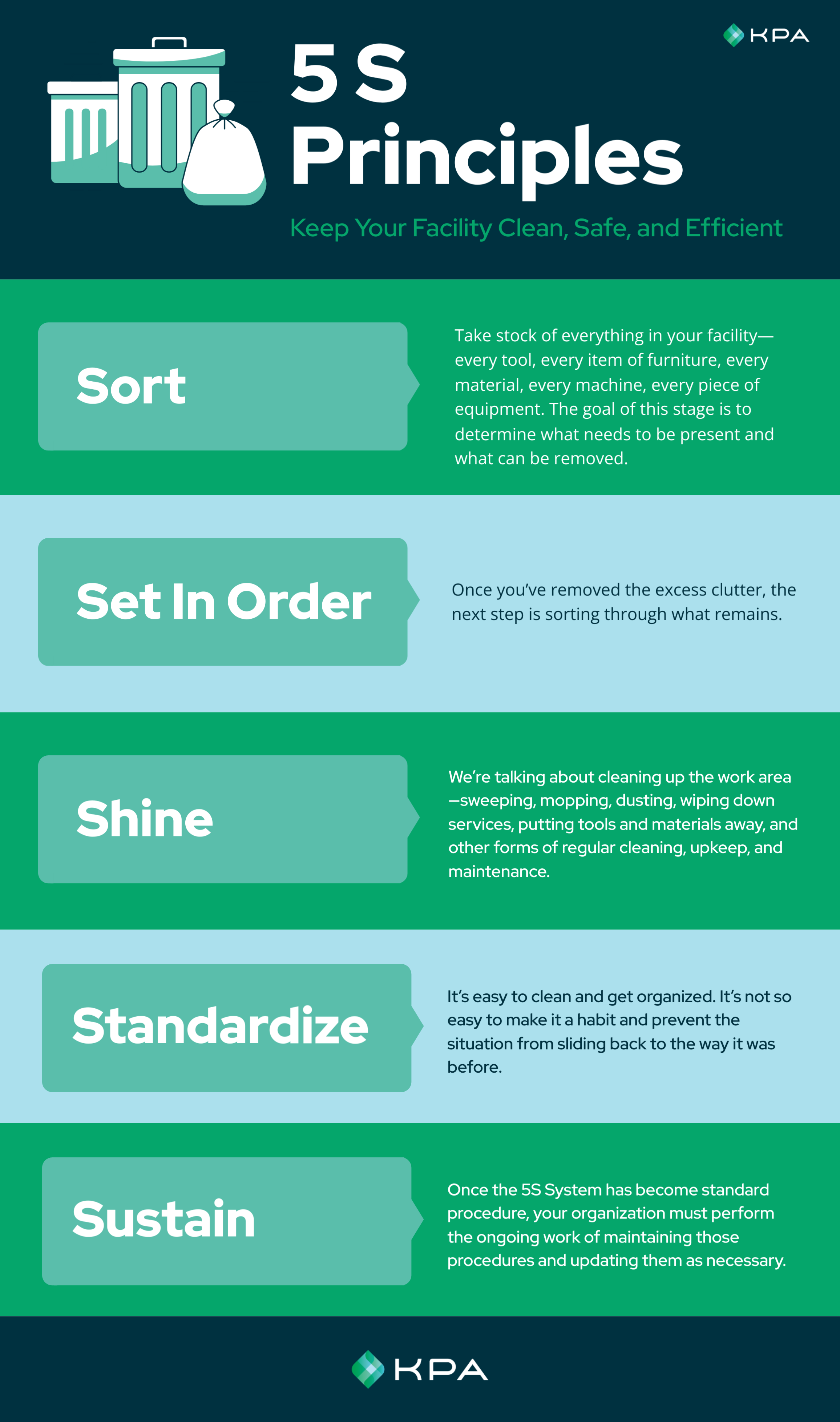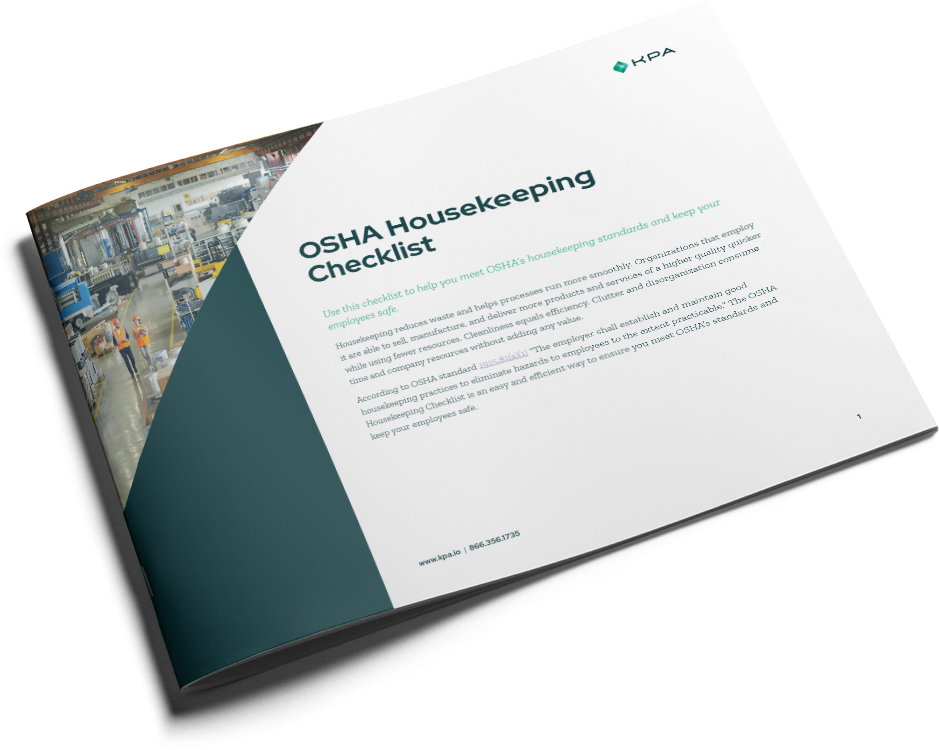So you’ve taken a long, hard look at your facility and determined it’s time to clean things up. Time to disinfect and declutter. Time to organize and streamline. Time to take care of the mess before it becomes a source of injury, illness, or regulatory fines. Ready to roll your sleeves up and get to work? Here’s how to practice good housekeeping as swiftly and efficiently as possible with the 5 S Principles (also known as the 5S System, or simply 5S)—a lean business methodology for workplace organization.


OSHA Housekeeping Checklist
Download KPA's OSHA Housekeeping Checklist to help you identify areas in need of some good housekeeping.
An Overview of The 5S System
Successful 5S organizations know how to keep things interesting.
Look for areas that can be improved and ways to make cleaning fun and rewarding. Pay attention to what other organizations are doing—new ideas and advances in the 5S System come along often.
Remember: housekeeping is an ongoing practice. I’d say it’s a marathon, not a sprint, but marathons end—the work of housekeeping is never over. This is why it can be so challenging for organizations to move past Phases 1–3 of the 5S System.
When you launch your housekeeping initiative, you might grab people’s attention—you might get them on board right away. But it’s that period between when it’s new and when it becomes a routine that you’re most likely to lose people. After they’ve done it once, they won’t want to keep doing it. Their passion will fade. They’ll become burnt out. That’s why managers need to get creative with how they keep people motivated—a topic we’ll explore in our next article.
Don’t wait until then to start cleaning and improve your organization’s housekeeping. KPA’s workforce safety and compliance team can help—contact us.
Related Content
Explore more comprehensive articles, specialized guides, and insightful interviews selected, offering fresh insights, data-driven analysis, and expert perspectives.
